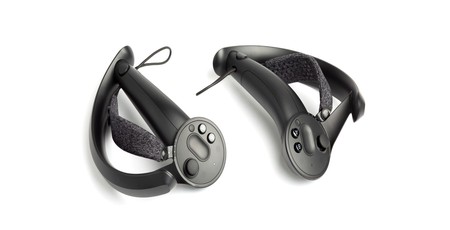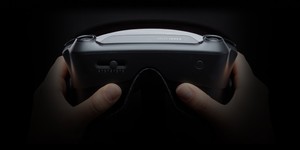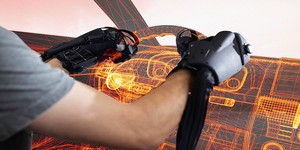
Valve has announced another revision of its Knuckles finger-tracking virtual reality (VR) controller, dubbed Knuckles EV3, which it claims is a considerable improvement on what has gone before.
First unveiled back in October 2016 as an unnamed prototype before receiving the name Knuckles in June 2017, Valve's virtual reality controller aims to provide a greater sense of realism: Rather than clicking a button to grasp and release in-game objects, the controller is able to sense the position of the user's fingers; combined with a strap to stop the thing from flying off and embedding itself in the nearest wall, Knuckles allows you to open and close your hand to pick up or release in-game objects - or to flip your opponent the bird, if that's your wont.
Much like the more traditional Steam Controller, though, Knuckles is going through considerable design changes as it works its way from prototype to developer unit to commercial availability. The Knuckles EV2 design was a considerable improvement on Knuckles EV1.3, the first version provided to external developers in volume, and now Valve has accelerated the development process with the announcement of Knuckles EV3 mere months after shipping its predecessor.
'Since sending these [Knuckles EV2 dev kits] out we've received a bunch of great feedback from developers,' writes Valve's Lawrence Yang in a project update. 'The team has continued iterating and making improvements, and we're excited to announce that Knuckles EV3 dev-kits are now available. Knuckles EV3 improves on the EV2 design with updates to input feel, strap design, battery life, and more.'
The changes include better consistency for the force sensor (FSR) hardware, meaning grip detection should be stable between controllers, an improved strap, a stronger trigger spring, recessed System button and USB port, boosted reliability, and better battery life - an increase of two hours, Yang claims, taking the total playtime per charge up to 7-8 hours.
Yang claims that the new revision is being produced in considerably greater volume than its predecessor, though still remains exclusive to developers signed up to Valve's Steamworks platform. The company has also announced new developer resources, including enhanced demos which use SteamVR Input, Skeletal Input, and the SteamVR Interaction System to showcase the devices' capabilities.
Valve has not, however, indicated a timescale for commercial release.

MSI MPG Velox 100R Chassis Review
October 14 2021 | 15:04








Want to comment? Please log in.